10 Most Impactful Types of Influencer Marketing Tactics to Boost Your Results
.jpeg)
Influencer marketing tactics are crucial in executing successful campaigns and supporting your overall influencer strategy.
While there are many influencer marketing examples and countless ways to work with influencers—from product launches to giveaways to sponsored content—the key is ensuring your approach aligns with your brand's values and goals. Doing so will set you up for a successful influencer marketing campaign that resonates with your target audience and drives real results for your business.
So, what are the most common influencer marketing tactics?
10 Most Common Types of Influencer Marketing Tactics
- Product Seeding: Sending free products or samples to influencers with no strings attached—and the hope they will create content about the product or share their experience with their audience.
- Sponsored content: Paying an influencer to create content that promotes your brand or product, which is then shared on the influencer's social media account.
- Influencer-generated content (IGC): Partnering with influencers to create unique and original content featuring your brand or product, which is then shared on their social media account. Additionally, you can acquire usage rights to the content and promote it through your own paid advertising channels, reaching a wider audience with the influencer's endorsement.
- Affiliate marketing: Offering a commission or other incentive to influencers who promote your brand or product and drive sales through their unique affiliate link.
- Social media takeovers: Giving an influencer control of your brand's social media account(s) for a set period of time, allowing them to create and share content directly with your audience.
- Contests and giveaways: Offering a prize or incentive in exchange for followers engaging with your brand or product, often by sharing the contest or giveaway on social media.
- Influencer events: Rolling out the red carpet and inviting influencers to attend a brand-sponsored event or experience can create content creation and social media sharing opportunities.
- User-generated content (UGC): Encouraging your customers or followers to create and share their own content featuring your brand or product. This can include photos, videos, or reviews of your products or services. By encouraging your followers to create and share content, you can increase engagement and build trust with your audience.
- Micro-influencers: Collaborating with influencers who have smaller, more niche audiences but a high level of engagement, which can be more effective for reaching specific demographics.
- Brand Ambassadors: Working with influencers to establish a longer-term partnership in which they become advocates for your brand and promote your products or services on an ongoing basis. This can help build a strong connection with their followers and create a consistent stream of brand promotion.
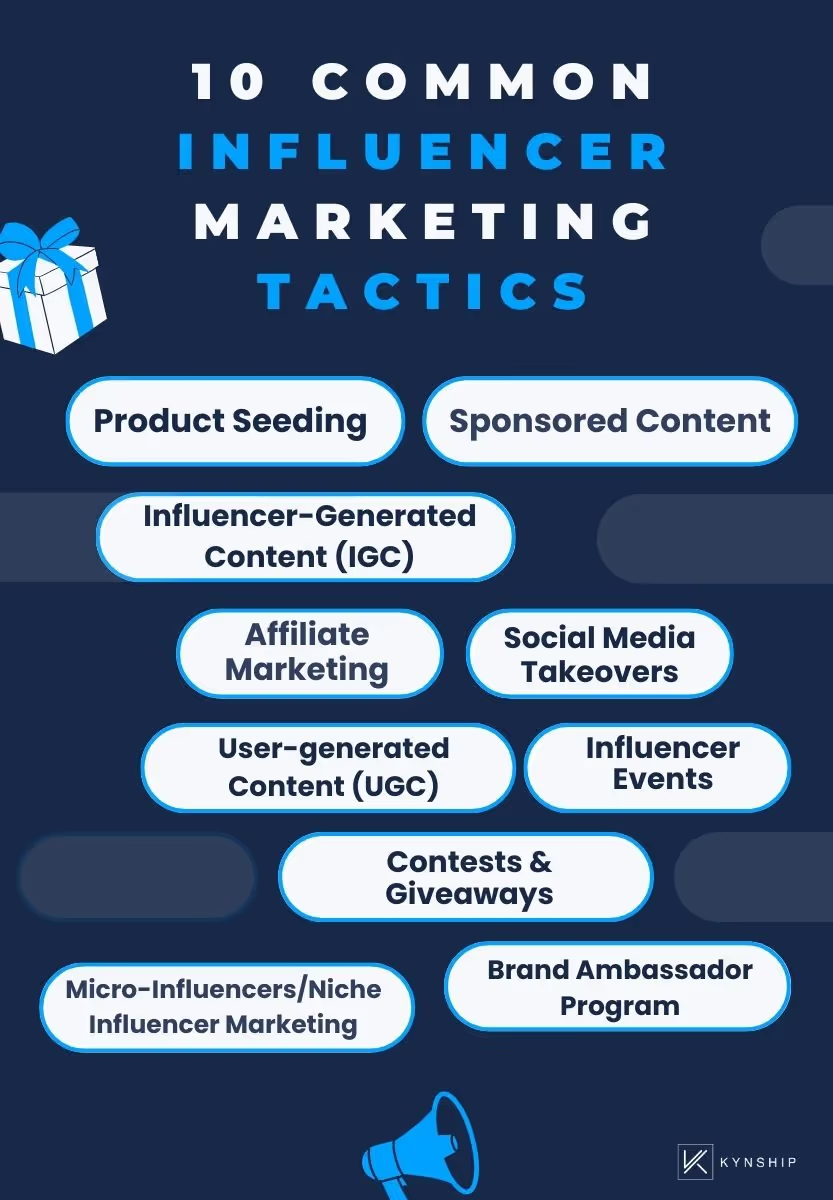
Influencer Marketing Done Right: 3 Brands That Nailed Their Tactics & Strategy Combo
Here are three brand examples of successful influencer marketing campaigns that used different tactics to achieve their goals:
Example 1: Sperry Honey Crushes it with Affiliate Marketing
Sperry Honey is a small North Dakota-based apiary that has been beekeeping since the 1920's—selling their beeswax online and their honey wholesale.
Sperry Honey didn't have the budget for advertising to promote their beeswax, so Caleb Dueck Director of Marketing at Sperry Honey, had to seek alternative ways to engage with creators.
“We ignored social media, focusing only on micro-bloggers who wrote blog posts relevant to our product. This allowed us to pay nothing upfront, while also reaching our customers at their highest intent."
They turned to affiliate marketing, which proved to be a success and is now the primary driver of their customer acquisition efforts.

Example 2: How Sponsored Posts Drove Sales for True Earth
Tru Earth is an eco-friendly household product company committed to eliminating plastic from landfills and oceans. Ryan Mckenzie, the Co-Founder & CMO of Tru Earth said they've seen the most success with sponsored posts.

Example 3: Caraway's Success with Brand Ambassadors
Caraway is a cookware brand that has experienced impressive growth thanks to its ambassador program. Accounting for 13% of the brand's revenue, the program began with around 35 influencers collaborating in an affiliate capacity before evolving into a solid foundation of over 3500 long-term influencer relationships.
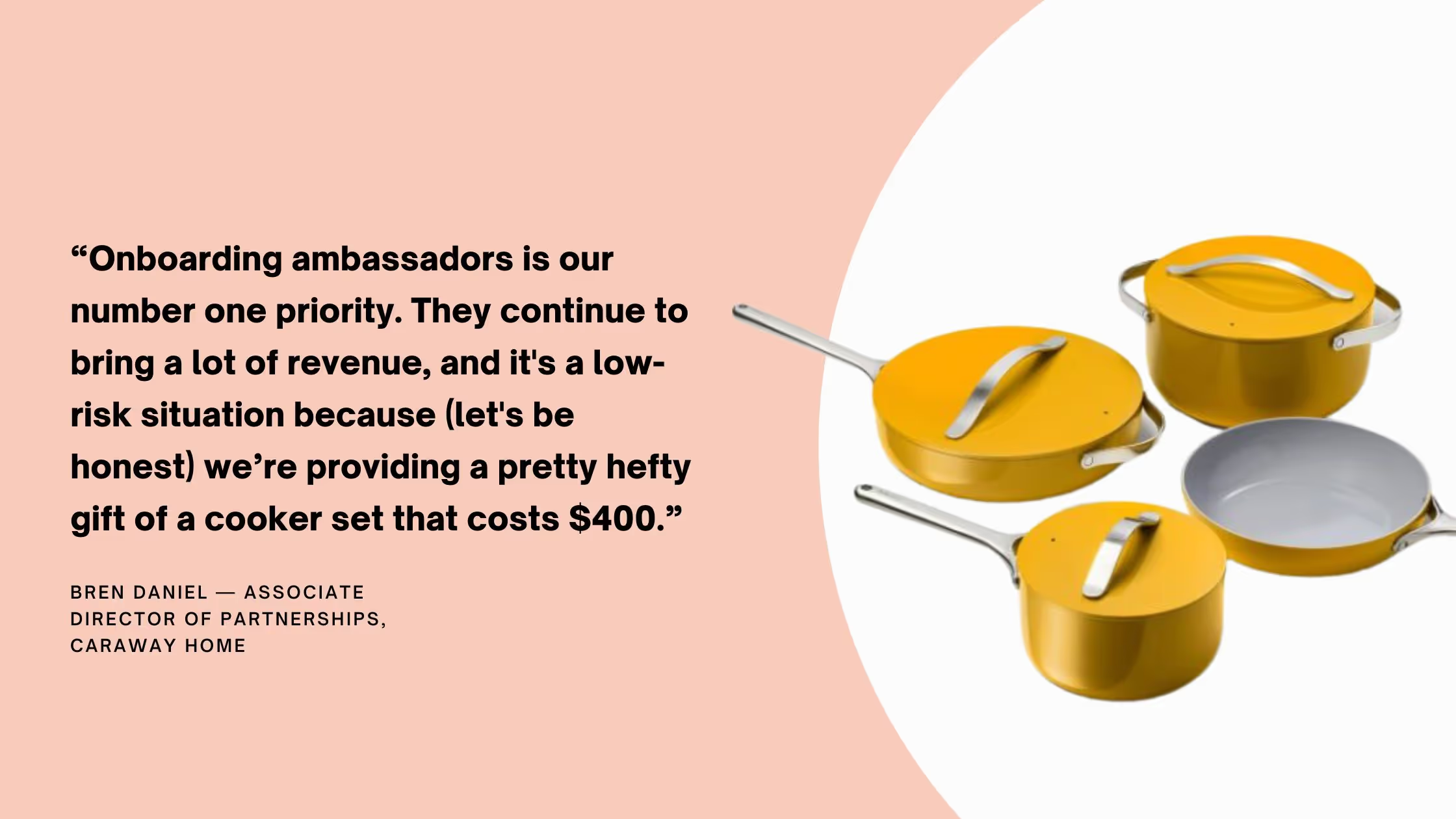
Bren Daniel, Associate Director of Partnerships at Caraway Home, said they have grown alongside many influencers who have gone from 5,000 followers to over 150,000.
Read the full Caraway case study.
6 Influencer Marketing Mistakes Brands Make & How to Avoid Them
Now, let's discuss six mistakes brands make when using some of these influencer marketing tactics and how you can avoid being one of them.
Not Leveraging Paid Advertising To Scale IGC/UGC
Brands often fail to maximize the impact of their influencer-generated content (IGC) or user-generated content (UGC) with paid advertising, which can limit the reach and engagement of their own influencer content and marketing campaigns.
By leveraging paid advertising to amplify IGC and UGC, brands can extend the reach and engagement of their influencer marketing campaigns. Paid social media ads are particularly effective in this regard, as they allow brands to target specific audiences and showcase their IGC and UGC in a more prominent way.
Related: How to Maximize & Scale Paid Media Success With Influencer-Generated Content
Thinking Bigger Is Better (Macro-influencers vs Micro-influencers)
Many brands assume that working with macro-influencers with large followings will lead to more significant results, but this is not always the case. In fact, micro-influencers with smaller followings can be more effective in reaching a specific niche audience and driving engagement.
Check this out 👀:
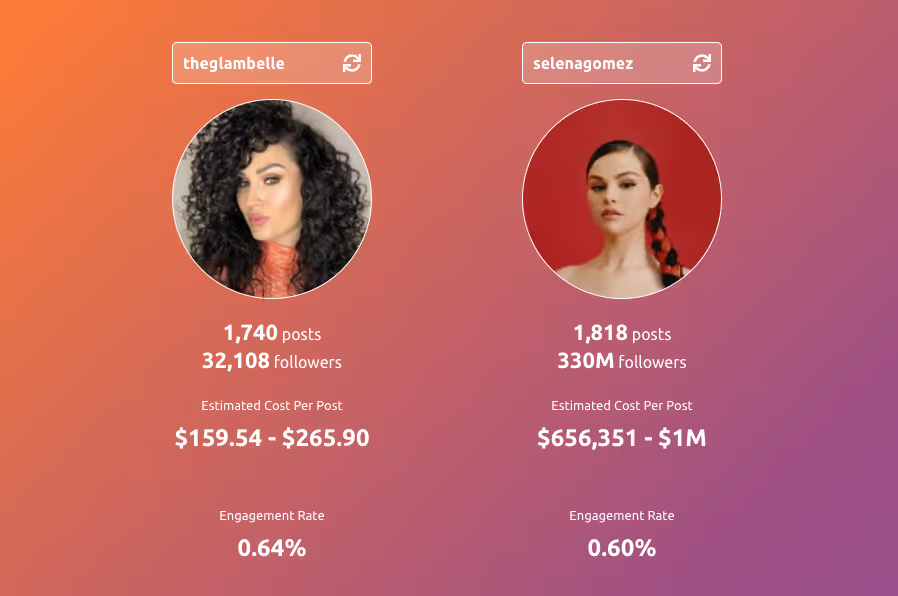
Macro-influencers may have more reach, but they also have a more diverse audience. As a result, their engagement rates may not be as high as those of micro-influencers, who often have a more focused and engaged audience. Additionally, macro-influencers are usually more expensive to work with, so brands may end up spending more money for less engagement and ROI.
To avoid this mistake, brands should focus on finding influencers that align with their target audience and values, regardless of their follower count. Micro-influencers with a highly engaged following can be an effective way to reach a specific audience and drive engagement, especially if they have a strong connection with their followers.
By choosing the right influencers based on their audience and engagement rates, brands can create effective influencer campaigns that drive results and build credibility with their target audience.
Failing To Provide An Amazing Unboxing Experience
Many brands focus solely on the product they are sending to influencers and forget about the overall experience. However, the unboxing experience can have a big impact on the influencer's perception of the brand and the content they create.
A good unboxing experience should be visually appealing and provide the influencer with all the information they need to create high-quality content. This includes clear instructions on how to use the product, any key features or benefits, and information about the brand's values and mission.
To create the perfect unboxing experience, consider adding personalized touches, such as a handwritten note or custom packaging, to show the influencer that you value their partnership. You can also include props or accessories that the influencer can use in their content to make it more engaging and creative.
Not Being Strategic With Channel Selection
Brands often make the mistake of spreading themselves too thin by trying to be present on every social media platform instead of focusing on the channels that are most effective for their audience and goals.
In the case of Caraway, they have identified Instagram as their most effective channel for influencer marketing, and they allocate 80% of their influencer efforts to it. By being strategic with their influencer outreach and channel selection, they can maximize their impact on Instagram and maintain a consistent presence there.
The remaining 20% is dedicated to YouTube, and only a handful of ambassadors working with the brand team to create brand awareness on TikTok. The absence of linking on TikTok makes it difficult for Caraway to integrate with the platform or make the feed shoppable. As a result, Caraway's affiliate team will explore the platform when it becomes more mature.
Lack of Success Measurement Strategy
Brands should create a clear plan for measuring the success of UGC/IGC campaigns. This can involve setting specific metrics to track, such as engagement rates or click-through rates, and using tools to monitor and analyze the performance of the content created by influencers.
The following are some key performance indicators (KPIs) to consider when measuring the success of your influencer marketing campaign:
- Engagement Rate: One of the most important KPIs is the engagement rate, which measures the level of interaction between the influencer's audience and your brand. This includes likes, comments, shares, and any other form of engagement on the influencer's post.
- Reach: Reach measures the number of people who have seen the influencer's post. This is important to determine the potential exposure your brand received from the campaign.
- Conversions: Conversions are the number of people who took the desired action, such as making a purchase, after seeing the influencer's post. This is the most important KPI as it directly measures the impact of the influencer campaign on your business.
Why Product Seeding Alone May Not Be Enough & How to Provide Effective Incentives for UGC/IGC Campaigns
Using product seeding could be a potential solution to incentivize UGC/IGC campaigns, as it allows influencers to try the product and share their honest opinions with their followers. By providing the product for free (no strings attached), the influencer may be more likely to participate in the campaign, as they have something tangible to work with and can showcase the product to their followers.
However, it's important to note that product seeding (as a tactic) alone may not be enough to drive the desired results.
“The biggest failure (or struggle) was with UGC/IGC influencer marketing. While we found that customers seemed more willing to engage with content created by our influencers, it was difficult to measure the success of these campaigns due to their short lifespan and lack of control over the content being created. It was also difficult to provide incentives for UGC/IGC campaigns that would make them worthwhile for our influencers to participate in.” — Ryan Mckenzie, the Co-Founder & CMO of Tru Earth
Brands should also consider providing additional incentives, such as commission-based compensation, exclusive discounts, or early access to new products, to further motivate influencers to participate and create high-quality content.
Ultimately, the key is to find a balance between incentivizing influencers and maintaining authenticity in their content. Influencers should be genuinely interested in the product and willing to share their honest opinions with their followers, rather than simply promoting it for the sake of compensation.
Emerging Trends in Influencer Marketing Tactics
As the influencer marketing industry continues to evolve, there are several emerging trends that you should be aware of to stay ahead of the curve.
1. Micro-Influencers
Micro-influencers are social media users with a smaller following, typically between 1,000 and 100,000 followers. They are becoming increasingly popular due to their highly engaged audiences and lower costs than macro-influencers. Working with multiple micro-influencers can also help you broaden your reach to a more niche audience and diversify your content.
2. Video Content
Video content is becoming increasingly important in influencer marketing. Platforms such as social media platforms such as YouTube, TikTok and Instagram Reels allow for short-form video content that can be highly engaging and shareable. Working with influencers to create video content can help you reach a younger audience, particularly Gen Z, who are likelier to engage with video content.
3. Authenticity and Credibility
Authenticity and credibility are becoming increasingly important for successful influencer marketing strategy. Consumers are becoming more skeptical of sponsored content, and influencers who are seen as inauthentic or lacking credibility can damage your brand's reputation. Working with influencers who align with your brand's values and have a genuine connection with their audience can help build trust and credibility.
4. Niche Influencers
Niche influencers are becoming more popular as brands search for influencers targeting specific audiences. Working with influencers with a highly targeted audience can help you reach new leads and increase conversions. For example, if you're launching a new product for fitness enthusiasts, working with fitness influencers can help you reach your target audience more effectively.
5. Long-Term Partnerships
Long-term partnerships with influencers can be more effective than one-off campaigns—consider Caraway's success with this. Building a relationship with an influencer over time can help increase their credibility and authenticity leading to more purchases and brand loyalty. Additionally, long-term partnerships can help you save costs on influencer fees and create a more consistent brand message.
Overall, these emerging trends in influencer marketing can help you stay ahead of the curve to increase your chance of a winning influencer marketing strategy.
Best Practices & Actionable Tips for Brands Looking to Accelerate Their Influencer Marketing Strategy
It's crucial to have an effective influencer marketing strategy in addition to implementing tactics. Here are some tips to guide you:
How to Identify the Right Influencers
When identifying influencers to partner with for social media marketing, it's important to consider their audience, engagement rate, and authenticity. Here are some tips on how to identify the right social influencers:
- Use social media listening tools to identify influencers who are already talking about your brand or industry.
- Look for influencers who have a high engagement rate with their audience.
- Consider the authenticity of the influencer's content and their alignment with your brand values.
- Don't just focus on the number of followers an influencer has—micro-influencers with a smaller following can often have a more engaged audience.
How to Negotiate & Manage Influencer Partnerships
Once you've identified the right social media influencers to partner with, it's important to negotiate and manage the partnership effectively. Here are some tips on how to do so:
- Clearly define the scope of work and deliverables for the partnership.
- Establish a clear timeline for the partnership and ensure both parties know their responsibilities.
- Set a budget for the partnership and negotiate influencer rates with the influencer.
- Ensure that the influencer discloses any sponsored content to their audience.
- Monitor the influencer's content to ensure that it aligns with your brand values.
How to Measure the Success of Your Campaigns
Measuring the success of your influencer marketing campaigns is crucial to understanding their impact and making improvements for future campaigns. Here are some tips on how to measure the success of your campaigns:
- Define clear KPIs for your campaign, such as engagement rate, conversions, or new leads.
- Use promo codes or affiliate links to track conversions and purchases.
- Monitor social media metrics such as reach and engagement rate.
- Use social media listening tools to monitor the conversation around your brand and the campaign.
- Conduct surveys or focus groups to gather feedback from your target audience.
Analyzing Results
Once you have collected data on the KPIs, it's time to analyze the results. Here are some steps to follow:
- Compare the KPIs to your campaign goals to determine if they were met.
- Compare the KPIs to industry benchmarks to see how your campaign performed compared to others in your industry.
- Identify trends or patterns in the data to determine what worked and didn't in the campaign.
- Use the data to make any necessary adjustments to future campaigns.
Measuring the success of your influencer marketing campaign is crucial to ensure that you are getting the most out of your investment. By tracking the right KPIs and analyzing the results, you can make informed decisions and optimize your future campaigns for even greater success.
Unlock a Satisfying ROI with the Right Influencer Marketing Tactics
As the world of influencer marketing continues to grow, so does the number of tactics available to businesses. But let's be real— throwing everything at the wall and hoping it sticks won't bring you the results you're after. Without a solid influencer marketing plan and strategy in place to test the tactics against, you're just wasting time and money.
At Kynship, we've developed a proven framework that delivers real results. Our long-term approach involves building a community of influencers (through product seeding) who create engaging, organic content, producing a constant stream of ad content with usage rights, and utilizing an ad account that tests and scales winning creatives to maximize ROI.
If you want to understand in more depth which influencer marketing tactic is right for your brand, we talk about how you can matchmake your yearly revenue to the right tactic and strategy in this article for further reading.
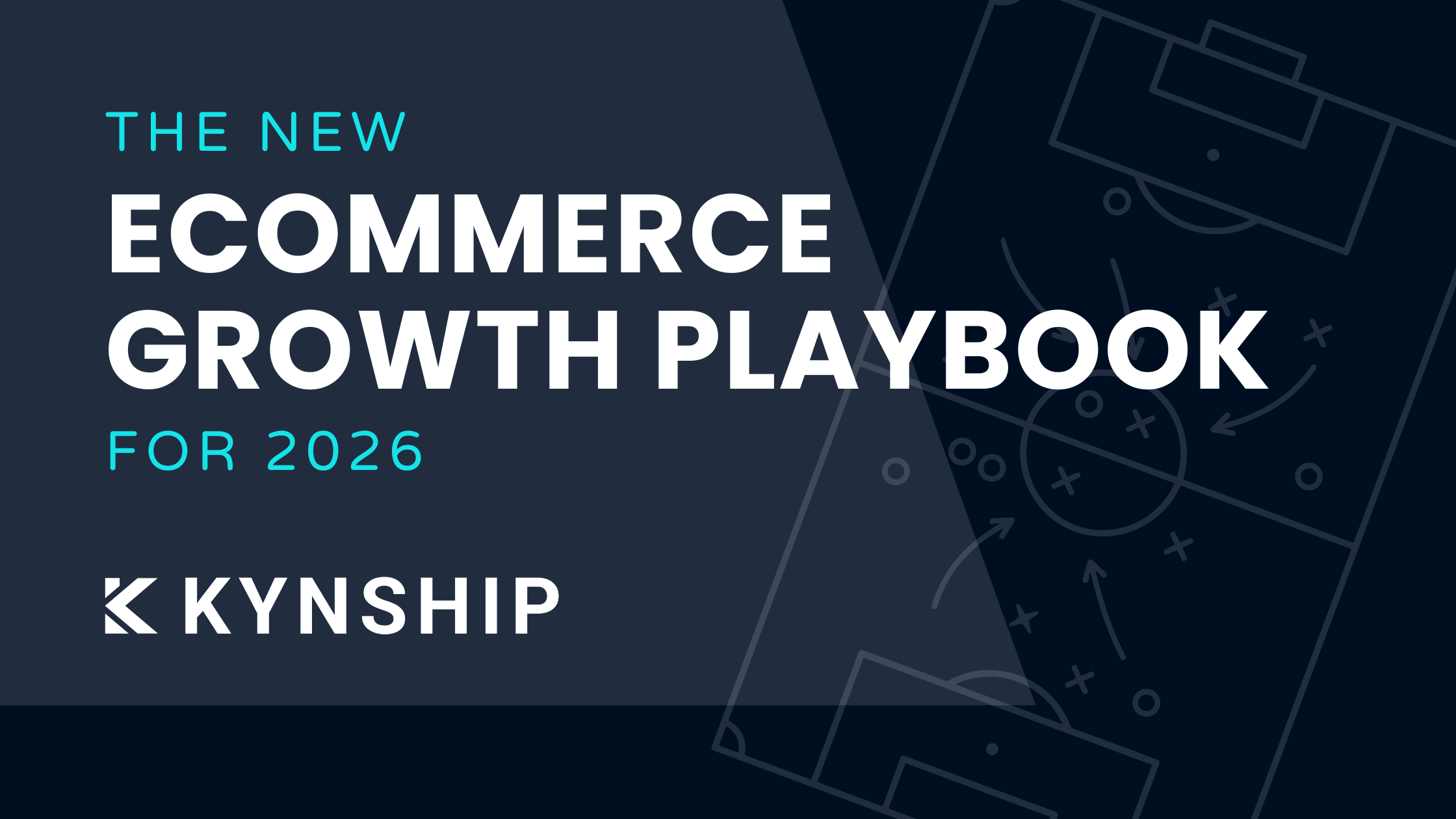
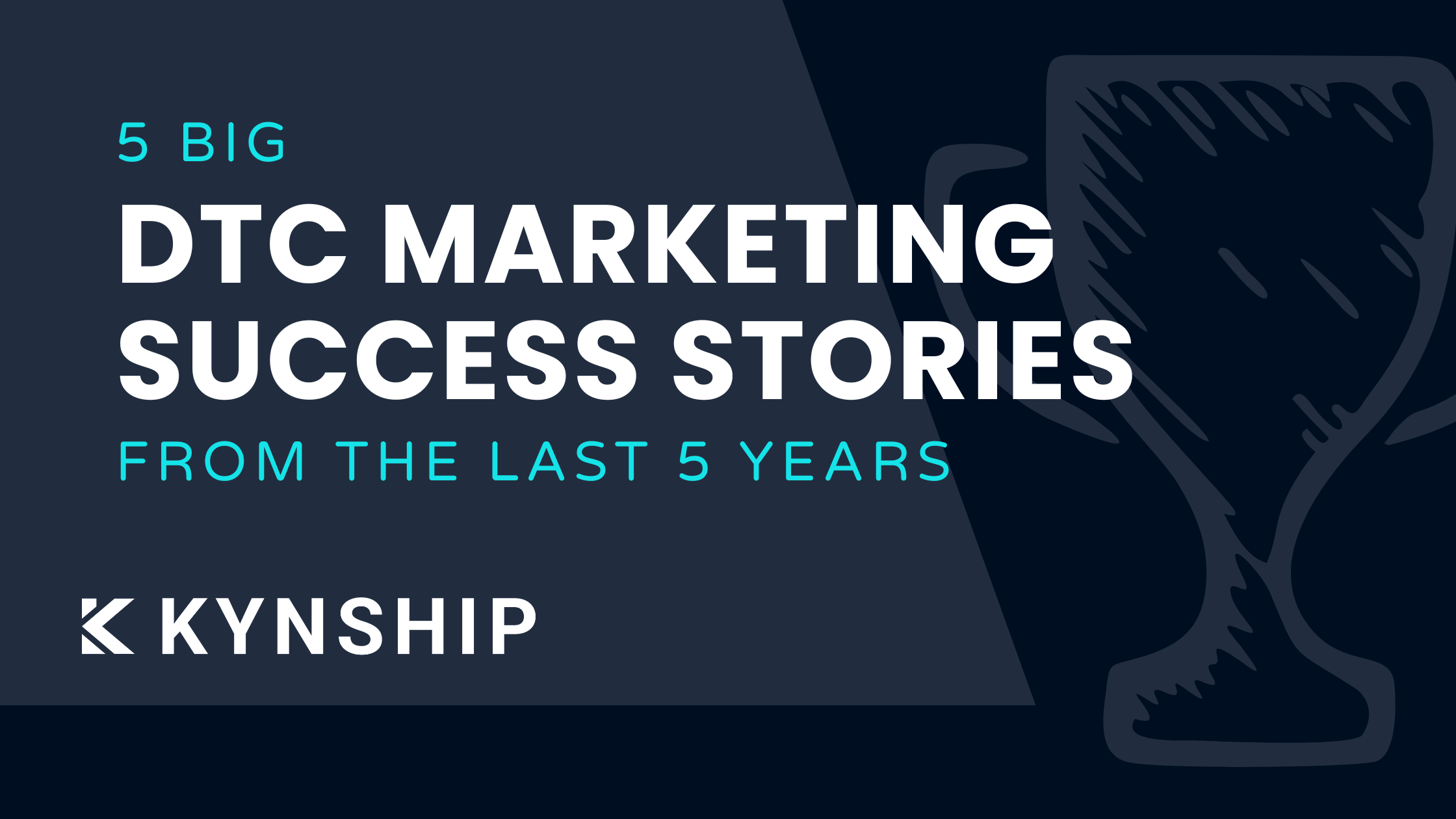
5 DTC Marketing Success Stories From The Last 5 Years
Five real DTC marketing success stories from the last five years, breaking down how brands scaled despite rising CAC, creative fatigue, and tougher competition, plus key lessons you can apply today.

The New Ecommerce Growth Playbook For 2026
These are the ecommerce growth marketing strategies we are using right now to successfully scale DTC brands from $2M to $50M.
Bi-weekly tips to reduce your CAC
Join thousands of DTC operators and subscribe to Cut the CAC for insights from the Bottom Line Podcast and Kynship's growth strategies.


.avif)
.avif)
.avif)



